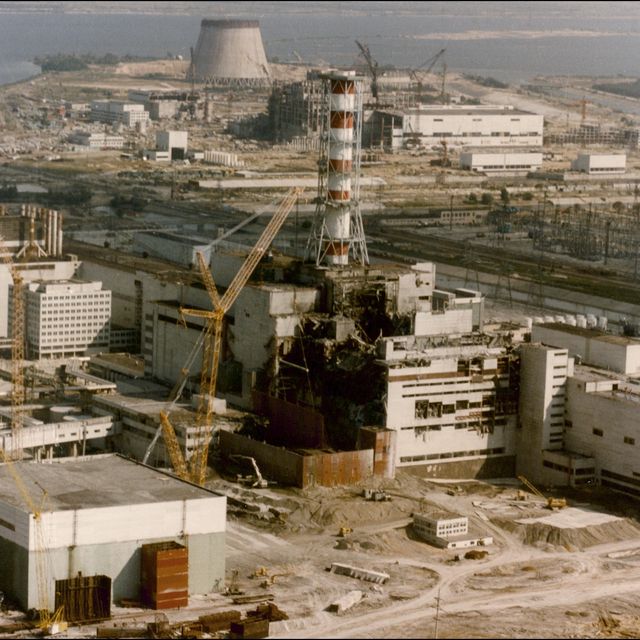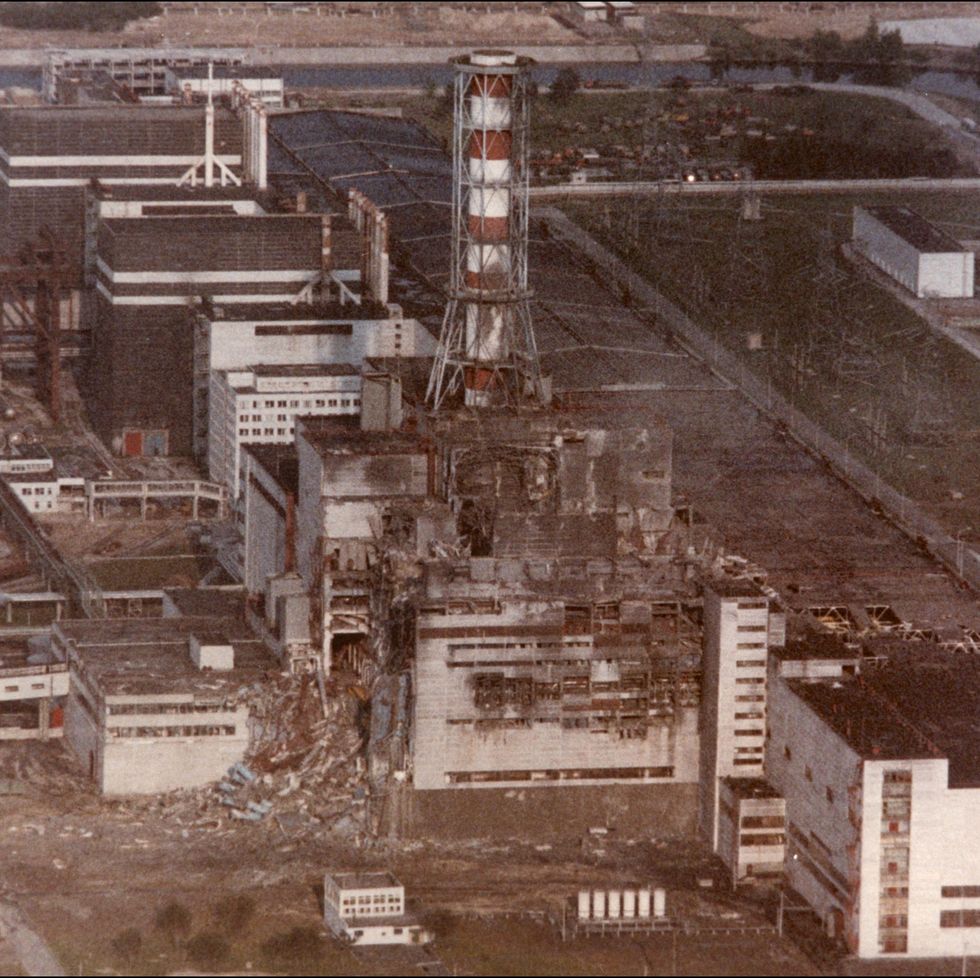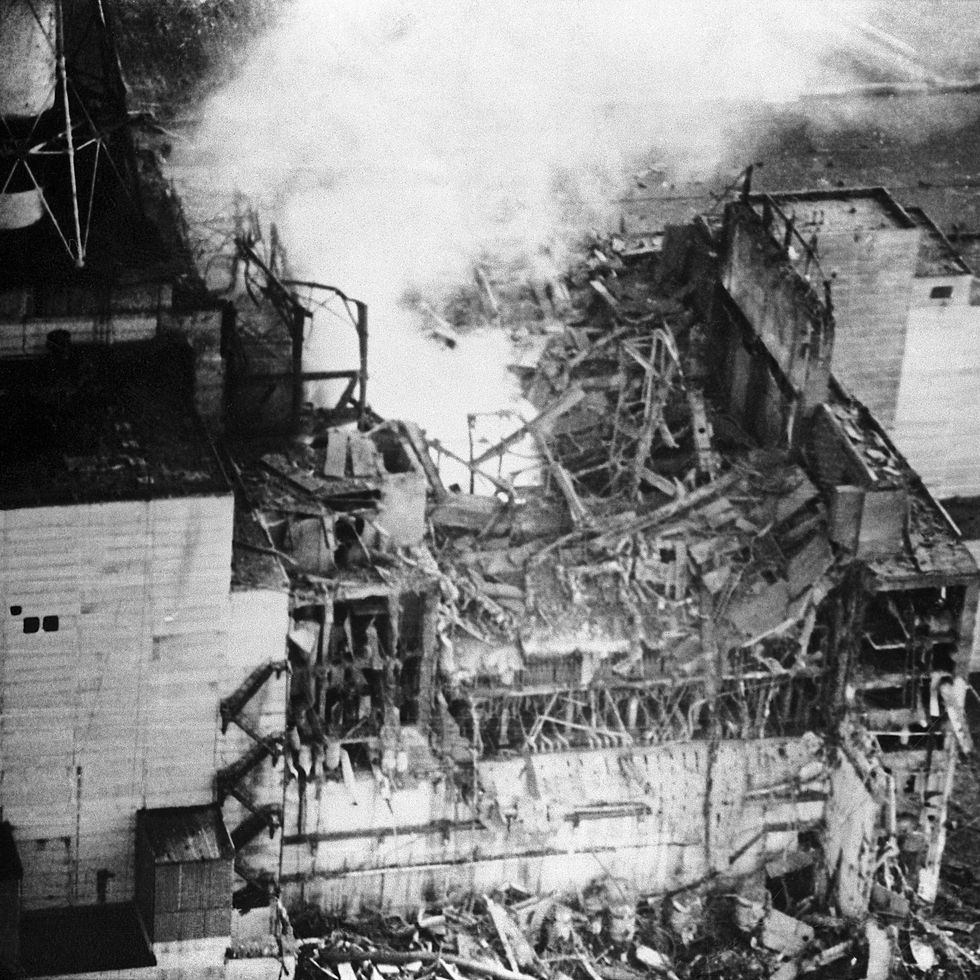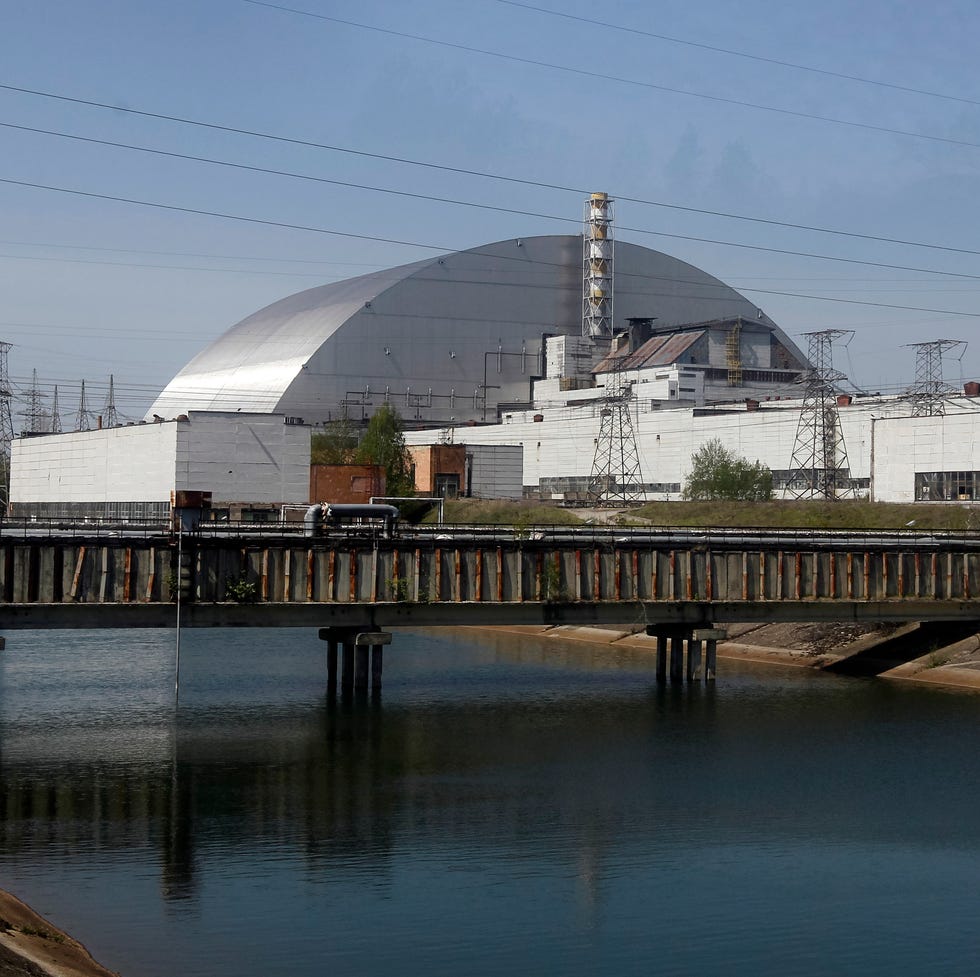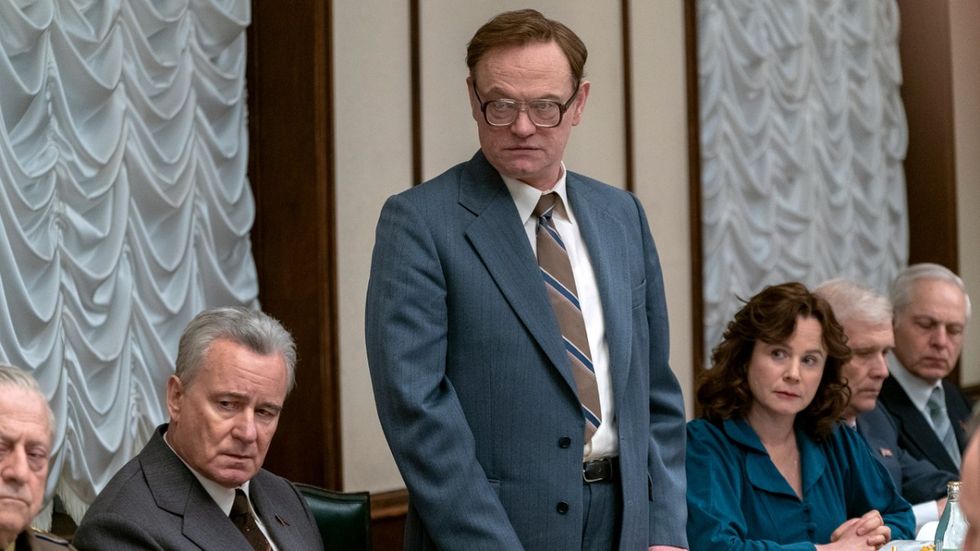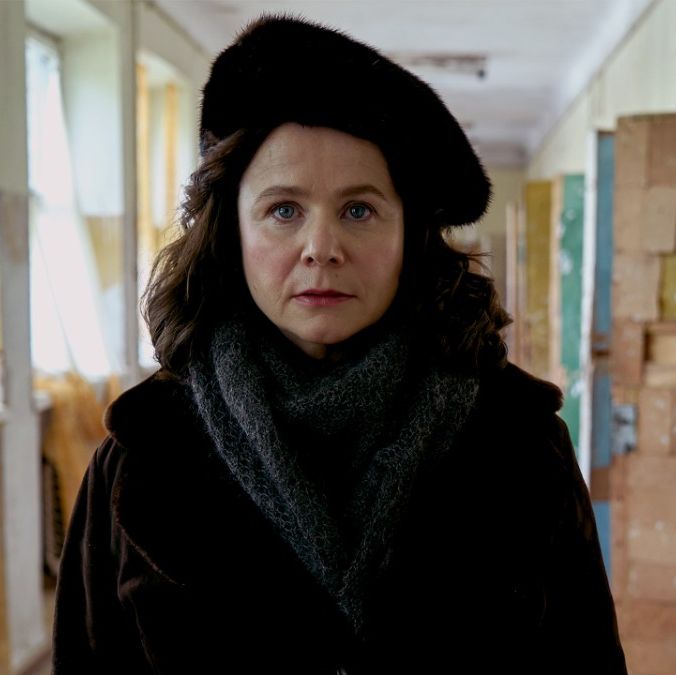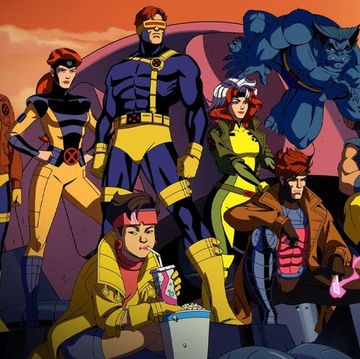- HBO's limited series Chernobyl is nominated for 19 Emmys.
- Based on real events, creator Craig Mazin wanted the show to be as true to life as possible.
- This is the true story of The Chernobyl Incident, the largest man-made disaster in world history.
If you haven't seen, or somehow haven't yet heard about HBO's limited series Chernobyl, perhaps you've instead seen snippets of it on your HBOGo menu, or in the moments before or after a Game of Thrones episode.
Having debuted back in May and embarking on a five-episode run, Chernobyl became one of HBO's biggest successes of the year. As a result, the series has been nominated for 19 awards at this month's Emmys. With standout writing from Craig Mazin (a nominee himself) and outstanding acting from the likes of Jared Harris, Stellan Skarsgård, and Emily Watson (all nominated for their efforts), and a tightly-plotted true narrative, the series is more than worth your time.
Nominated for Outstanding Limited Series, Chernobyl joins a category simply stacked with true-story series this year: Escape at Dannemora, Fosse/Verdon and When They See Us are all also based on real events (the lone other nominee, HBO's Sharp Objects, is based on a best-selling novel).
In actuality, The Chernobyl Disaster was a real-life a nuclear meltdown that occurred in Soviet Ukraine in April 1986 following an explosion, a fire, and a whole lot of radiation being released. The series is said to be as "close to reality" as possible—but what was the reality? We took a shot at answering some of the biggest questions regarding the devastating disaster, which reached its 33rd anniversary earlier this year.
What happened at Chernobyl?
The Chernobyl incident, as it's commonly called, was the largest man-made disaster in world history. It occurred at the Chernobyl Nuclear Powerplant in the since-abandoned town of Pripyat, Ukraine, on April 26, 1986.
How did the Chernobyl incident start?
The World Nuclear Association describes the incident as "the result of a flawed reactor design that was operated with inadequately trained personnel." On the evening of April 25, workers performed a poorly-planned test that involved shutting down various safety systems in one of Chernobyl's four reactors, Reactor 4—all while keeping the reactor running on low power.
According to Britannica.com, the reactor went out of control in the wee hours of April 26, leading to explosions and a fireball that blew its lid right off. That, combined with a highly-carcinogenic fire that started in another part of the reactor, sent significant amounts of radiation into the atmosphere.
That fire burned for nine or 10 days, with harmful updrafts of the fumes flowing into the surrounding area's air supply.
How did they contain the radiation from Chernobyl?
The explosion site was initially covered with a sarcophagus to confine the radiation in the weeks after the explosion.
A new sarcophagus, called the "New Safe Confinement," was built by the EU and placed on site in October 2017. This piece of infrastructure was designed with the specific intent of confining what remains of the radiation from the reactor explosion for the next 100 years.
Did anyone die from the Chernobyl incident?
With an incident at the level of the Chernobyl disaster, there are differing levels of casualties. While some people died right away, immediately victimized by either the fire or poisioning from the plant's extreme levels of radiation, others suffered with health effects of various degrees years down the line.
According to the United Nations Scientific Committee on the Effects of Atomic Radiation, 600 workers were present on the Chernobyl Nuclear Power Plant site on the day of the incident, and 134 of them ended up suffering from acute radiation sickness. Twenty-eight of those people died within the next three months. Two workers, in fact, died on the night of the incident.
Fourteen more of the 134 died of radiation-induced cancer in the 10 years following the incident (up until 1996). Fifteen more deaths from childhood thyroid cancer—the type most commonly associated with dangerous levels of radiation—occurred between 1996 and 2011.
Over the next several years, a number of other health issues popped up in the area, though as UNSCEAR points out in the same study, it can be difficult to directly correlate the results with the causation of the Chernobyl disaster. To put some key findings simply:
• Many who got sick from the radiation at the plant but didn't die found continued health issues in the years that followed—some even developed radiation-induced cataracts, affecting their eyesight.
• It's tough to know exactly how many cancer cases were directly caused by the Chernobyl incident, as cancer rates in the region also happened to be on the rise before the disaster occurred.
Have there been any other long term effects?
An incident like Chernobyl can cause mental health effects in addition to physical health issues.
One piece of information the World Health Organization note in their findings is that exposed populations generally show anxiety symptom levels twice as high as those unaffected. The exposed were also found to be more likely to report a number of unexplained physical symptoms, and subjective poor health. Mental health problems, as they note, can tend to increase after a disaster, and could manifest years after the incident's occurrence.
Chernobyl Facts vs. Chernobyl Fiction
Certain media representations of Chernobyl, over the years, have managed to veer away from the reality of what actually happened. For instance, The Chernobyl Diaries, a major studio film, was released in 2012. While this film generally uses the actual Ukraine setting (the abandoned town of Pripyat, where the Chernobyl Nuclear Power Plant existed), that's where the similarities end. The movie veers into horror, with a group of teenagers passing through the Nuclear exclusion zones, coming into conflict with mutants, monsters, and, yes, fish mutants.
The HBO series wants to be the closest thing possible to the true story of what happened (no fish mutants in this one). If anything in the series comes even close to being inaccurate, it's the simple compressing of events for the sake of balancing the series' narrative with the events portrayed. The series three stars Jared Harris, Stellan Skarsgard, and Emily Watson, all have character traces that series Creator/Showrunner Craig Mazin traced in his extensive research.
If you want to remain unspoiled for HBO's Chernobyl series, this might be a good time to stop reading.
While there's not a ton of information about Valery Legasov, Harris's character, he was indeed a real person—the scientist responsible for investigating the design flaws that led to the incident. Legasov hung himself in his own home on the second anniversary of the meltdown; he was posthumously honored in 1996 as a 'Hero of the Russian Federation,' with his "courage and heroism" in the aftermath of the Chernobyl incident cited.
Skarsgård and Watson's characters are also based in reality—Boris Shcherbina, who Skarsgård plays, was a real bureaucrat, a Kremlin agent who oversaw the federation's actions in the energy sector, and forged a working relationship and friendship with Legasov in their efforts in the aftermath of the incident. While there's no person with the name Ulana Khomyuk, Emily Watson's astrophysicist character is based on the unearthed history of Soviet nuclear physicists who uncovered the flaws in the system that led to the disaster, and blew the whistle along the way.
